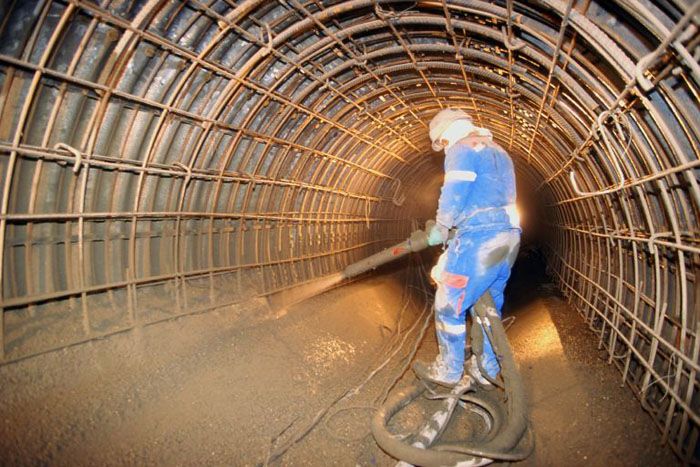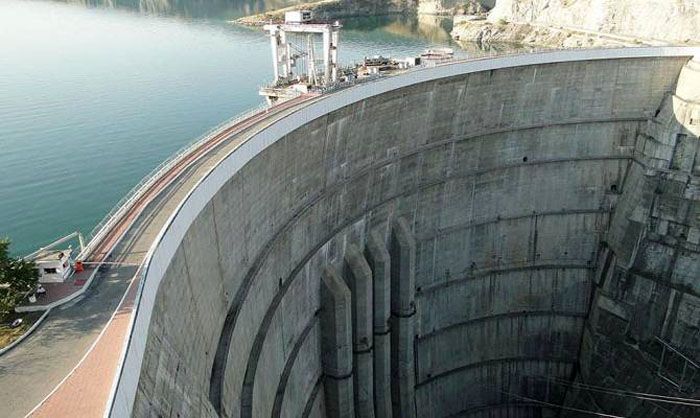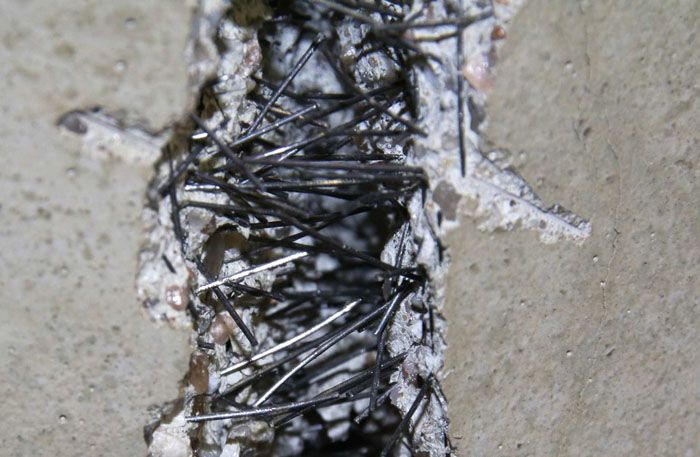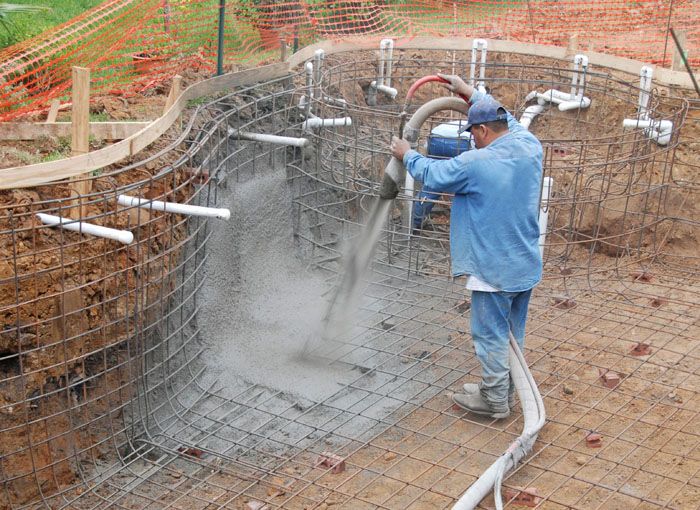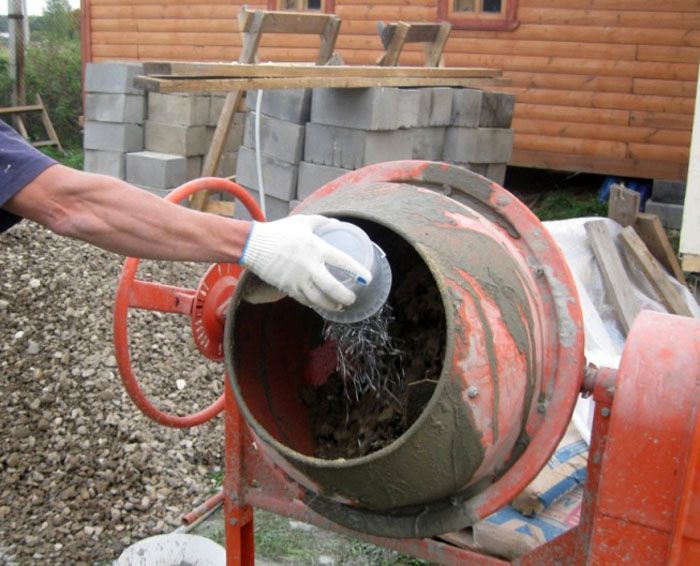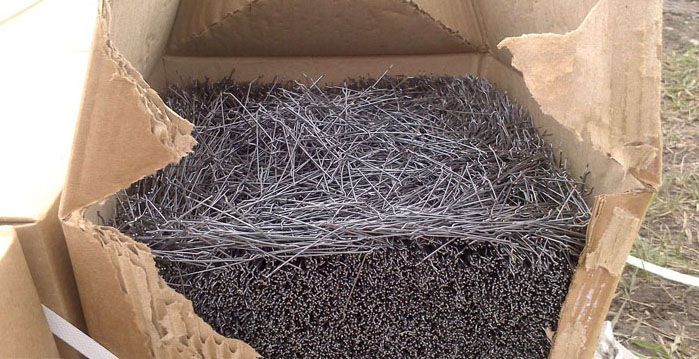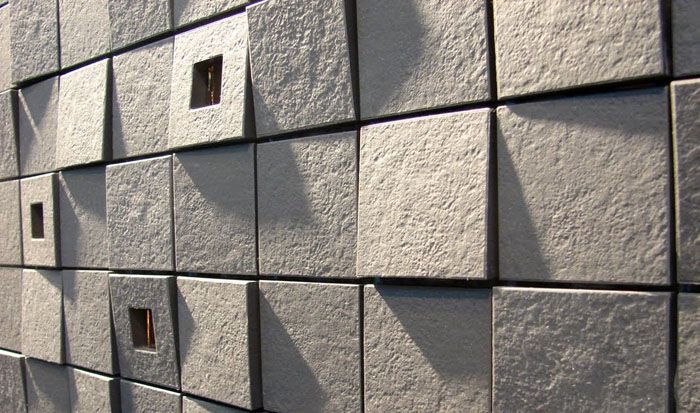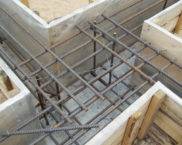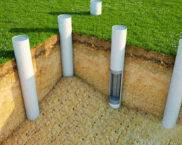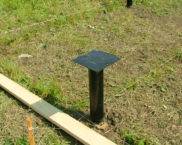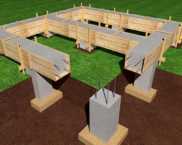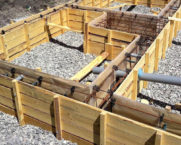The use of fiber-reinforced concrete: we study the nuances of manufacturing and the scope of reinforced material
More than one millennium has passed since the appearance of concrete as a building material, but scientific institutions and construction companies are still struggling to improve its technical characteristics. At the beginning of the twentieth century, the first scientific developments on dispersed concrete reinforcement appeared, where small pieces of metal wire of small diameter were used as fiber - the material obtained in this way was called fiber-reinforced concrete. Currently, fiber-reinforced concrete is quite in demand both in our country and abroad. Steel reinforcement and basalt, glass and polypropylene, and many other auxiliary materials are used as fiber. The use of fiber-reinforced concrete - the advantages and disadvantages, the main characteristics and methods of manufacturing, is it possible to make such material with your own hands, as well as an overview of current prices - the topic of this article is the editorial board of homemaster.techinfus.com/en/
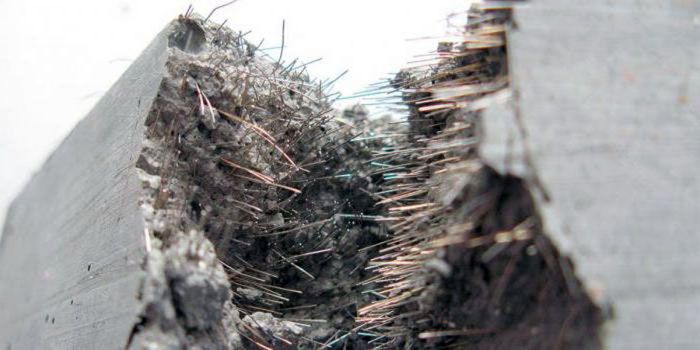
The presence of fiber in the composition of the concrete mixture increases the strength characteristics of concrete
The content of the article [Hide]
- 1 Fiber concrete - what is it and where is it used
- 2 Material features depending on the type of fiber used
- 3 Advantages and disadvantages
- 4 Methods for making fiber concrete
- 5 Is it possible to make fiber for concrete with your own hands
- 6 How much does fiber concrete cost - an overview of prices per m3
- 7 Video: fiberglass, basalt fiber
Fiber concrete - what is it and where is it used
Fiber concrete is a type of concrete, a distinctive feature of which is the presence of dispersed fibers (fibers) in the concrete mixture, which are a reinforcing material.
The following materials are used as fiber:
Fiber concrete is used in the manufacture of critical structures, the construction of various structures with increased requirements for their strength, as well as decorative elements and facades of administrative and public buildings.
This material is most in demand in the construction of such facilities:
Material features depending on the type of fiber used
The use of one or another material as a fiber gives the resulting concrete mixture certain properties that determine the options for using this building material:
Advantages and disadvantages
The demand for fiber-reinforced concrete in the construction of complex and critical structures is due to its positive qualities.
Two of the disadvantages should be noted: the high cost and increased wear and tear of equipment used for the manufacture of concrete using fiber.
Methods for making fiber concrete
Fiber-reinforced concrete can be made in several ways that determine the nature of its use:

Is it possible to make fiber for concrete with your own hands
The question of whether it is possible to make fiber with your own hands is quite relevant: fiber concrete is a good material for the manufacture of swimming pools and decorative elements, which are popular with individual developers in the design and improvement of a country house and the area adjacent to it.
There is an unambiguous answer to this question - you can do it, but the following materials are suitable as raw materials: pre-cut steel wire of a certain length, as well as polypropylene rope or polymer shopping bags, which should be pre-cut into small strips.
After the fiberglass is made, the process of self-preparation of fiber-reinforced concrete is similar to how it is done on a construction site using a mortar unit or concrete mixer.
How much does fiber concrete cost - an overview of prices per m3
As already written above, one of the disadvantages of this building material is its high cost, which is associated with the technology of its manufacture and the lack of desire of a number of manufacturers to produce this material, both due to the complication of the process of preparing the concrete mixture, and due to increased wear and tear of equipment.
The price of fiber-reinforced concrete depends on the region where the construction site is located, the grade of concrete and the required production volumes, as well as the fiber used.
The average cost of the material under consideration as of the III quarter of 2018 is:
| Concrete grade | Type of fiber used | Average cost (as of September 2018), RUB / m3 |
|---|---|---|
| B 7.5 (M100) | polymer | 2950 |
| B 10 (M150) | 3050 | |
| B 15 (M200) | 3150 | |
| B 20 (M250) | 3350 | |
| B 22.5 (M300) | 3450 | |
| B 25 (M350) | 3600 | |
| B 30 (M400) | 3900 | |
| B 35 (M450) | 4050 | |
| B 40 (M500) | 4200 | |
| B 7.5 (M100) | steel | 3350 |
| B 10 (M150) | 3450 | |
| B 15 (M200) | 3510 | |
| B 20 (M250) | 3750 | |
| B 22.5 (M300) | 3850 | |
| B 25 (M350) | 4050 | |
| B 30 (M400) | 4350 | |
| B 35 (M450) | 4450 | |
| B 40 (M500) | 4600 |
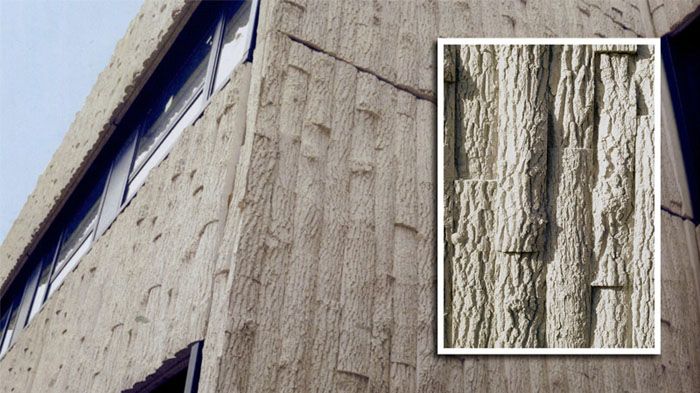
Due to the use of special dyes and shapes, panels made of fiber-reinforced concrete can have different colors and textures
Video: fiberglass, basalt fiber
What is fiber (and, in particular, basalt fiber), and how concrete can be used with its use, the following video will tell:




